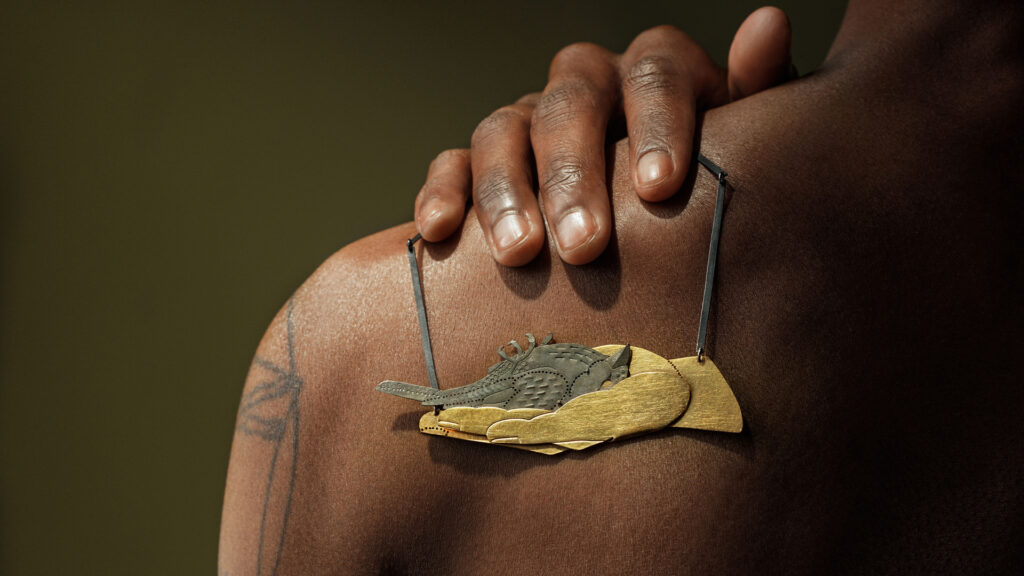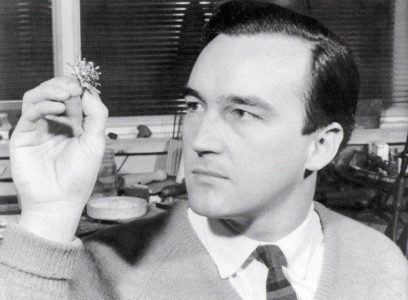Men & Brooches: A Voyage around Kevin Coates
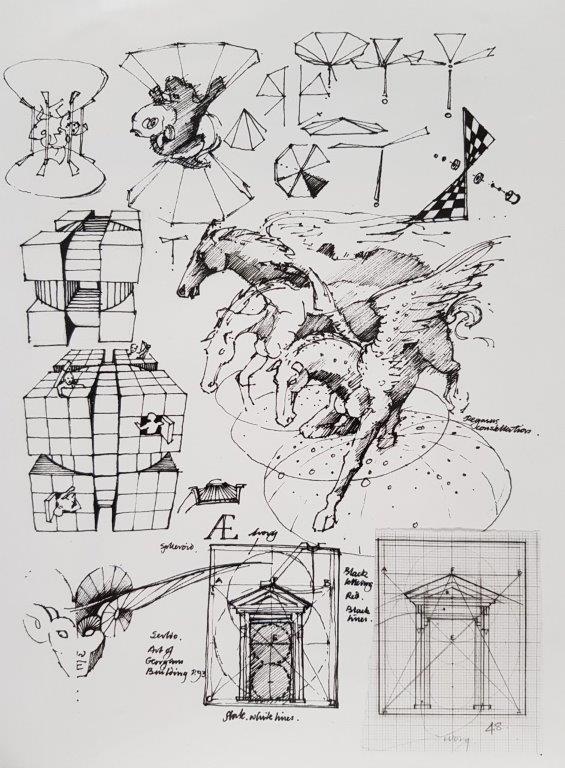
By The Goldsmiths’ Company Curator, Dr Dora Thornton
As a goldsmith working in the Renaissance tradition, geometry and architecture are enduring themes in the work of Kevin Coates. He enjoys the challenges of scale that a monumental brooch design presents; as seen on his ‘Serlio Doorcase’ brooch from 1983.

Crafted from silver, gold, inscribed old ivory and slate, it is a tribute to the great Bolognese architect, Sebastiano Serlio, who was described by John Summerson as “by far the greatest architectural writer of the sixteenth century.” Serlio’s treatise on architecture was printed in various editions and translated into several languages, so that it had a wide reach in his own time and beyond.The concept of the classical door, frequently illustrated by Serlio, obviously appealed to Kevin as an exercise in scale and proportion:
“Even the most obvious limitation, that of scale, brings with it a compensatory density…attention is more often achieved by whispering than shouting.”
For me, it is the slightly-open door panel on the brooch, carved from recycled slate, that draws my attention. I told Kevin that it reminded me of the similar door on the carved stone base of the monument in Padua by the great Renaissance sculptor, Donatello, which is dedicated to the mercenary soldier, Gattamelata.
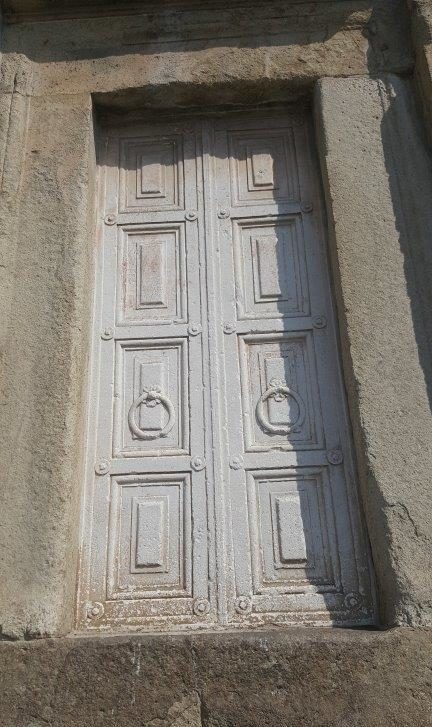
The equestrian figure above is in bronze, showing the famous victor commanding the piazza below him. Underneath the bronze, the lifesize doors into eternity face the viewer just above ground level, so that you feel you could just push the door open into Elysium, or the afterlife. I only have my own image taken on my phone when I last visited Padua, but I hope you can see that tantalising door beginning to open. Kevin liked the comparison: “I find all such connections exciting and meaningful, and of course, as you realise, it is one of the greatest things which fires my work.”
Kevin kindly let me see and reproduce here his initial sketch designs for the brooch from his series of notebooks. What a revelation they are into how he thinks and works as a goldsmith in the Italian Renaissance tradition. The first drawing shows a measured design on graph paper which illustrates his point that: “Using Serlio’s elegant proportioning, a classical doorcase can be drawn, by rule and compasses, from the ‘starting-point’ of just one known measurement – either the height or the width of the opening.”
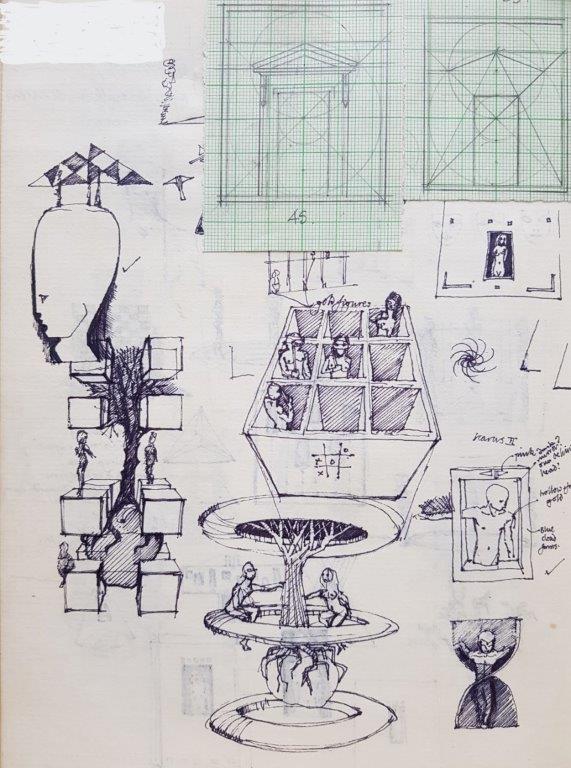
There is also a reference in the middle of the sheet’s lower edge to the rosewater dish commissioned by the Goldsmiths’ Company as the Prime Warden’s commission of Lord Nelson of Stafford in 1988.
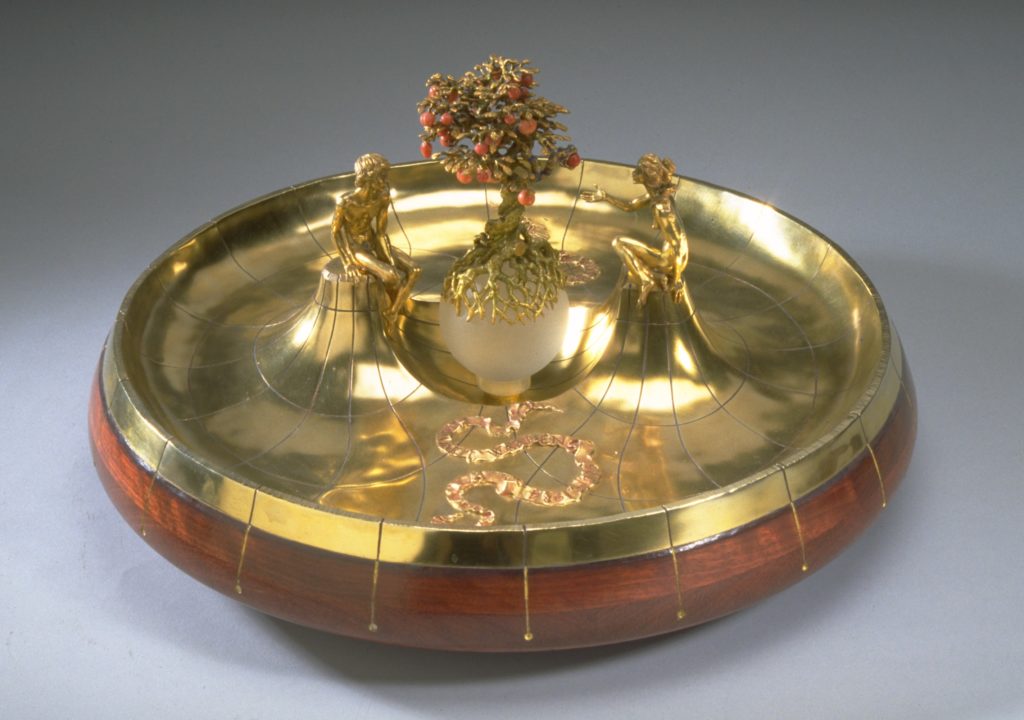
Lord Nelson was deep in the electrical engineering world: the silver-gilt bowl is engraved with lines of force and Adam and Eve sit on peaks of polarity with Eve reaching out for a carved coral apple from the Tree of Knowledge. In the design sketch Coates is thinking out how to show the roots of the Tree – here he has placed the globe under the bowl, whereas in the finished piece the roots of the Tree grasp a frosted glass globe at the centre of the bowl.
The drawing from the second notebook, made in the same year, shows a more developed design for the brooch in ink with annotations about the materials to be used.

Looking back at the brooch, you can see how the fasteners and fixings of Kevin’s jewels is always a major concern. In A Notebook of Pins, published in 2009, he notes: “When I complete a brooch or a pin, I will nearly always test it for balance and `lie’ by pinning it to my own clothing”.
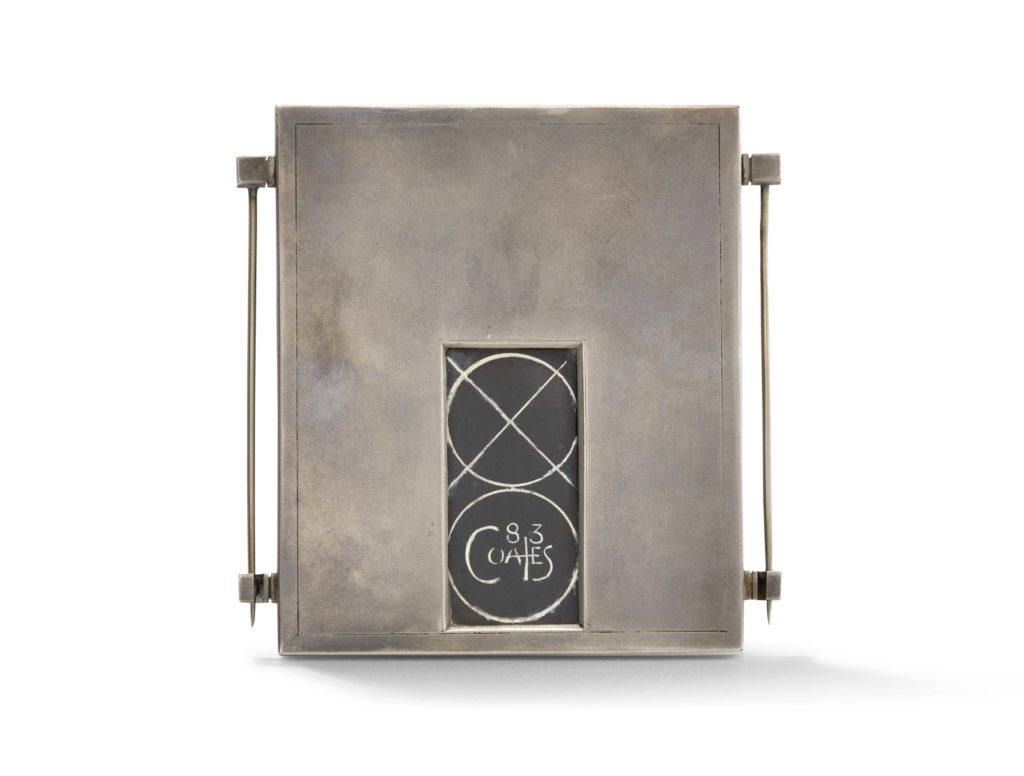
Here, the pins for attachment are at the outer edges, visible on the front as part of the design. It is a miniature jewel in the antique style—what Serlio would have described as “all’antica”. And it demands to be worn as a delightful piece which whispers rather than shouts.
Object photography by Clarissa Bruce and Paul Johnson.
Keep up to date with the Fair
Join our mailing list to receive exclusive event invitations, industry news and be the first to hear about Goldsmiths’ Fair updates.
Subscribe